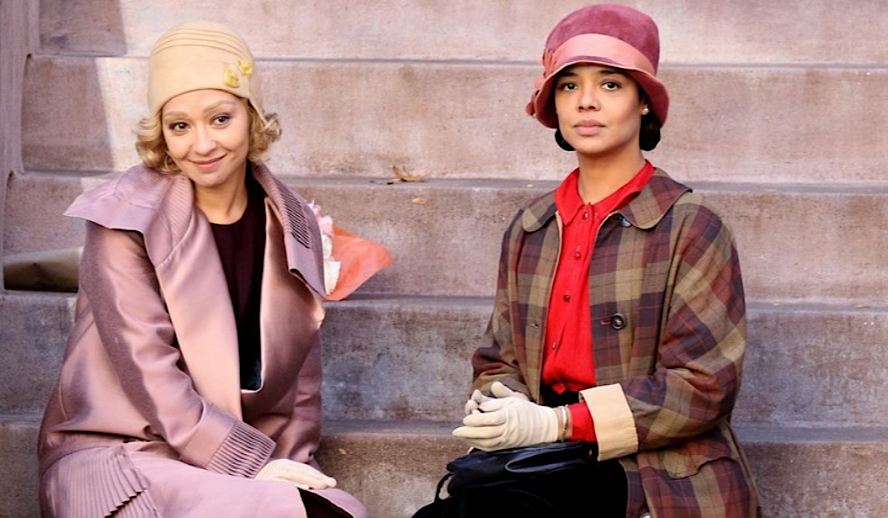
Passing. It’s the name of a new movie. One that refers to an age old way of moving in society if one is something other than white in America. If one is light skinned enough, one can ‘pass” as white. Why would anyone want to do that? Of course, to hold privilege and power in society.
In the Passing movie, two young African-American girls grow up and join society. They have lost contact with one another and then reconnect as adults. Clare is now passing as a white woman and married to an overtly racist man while her friend, Irene, is living her life as a Black woman. Who is being authentic in her racial identity? We find Irene longing to know what it feels like to hold the power of a white person in society and we have Clare curious about moving through life as a Black woman.
In this movie, the women are African-American. Rebecca Hall, the film’s director, adapted the story from the 1929 novella Passing by Nella Larsen. It was written in a particular time with a particular story about passing as white when one is Black. However, if we were to take it beyond the Black/white paradigm passing is a concept that many bi and multiracial people are familiar with in modern day.
White people still hold tremendous privilege in society and so if you can pass as white, why not some may say. Even today. As a biracial child, half East-Indian and half Caucasian, I was always treated as a white kid with a funny last name. I didn’t even realize I was carrying that privilege. All I knew was I fit in with the white kids and was accepted. And not just any kids, but the popular ones. Not being rejected, but being “in” is something all kids crave. I had no idea in small town America much of this acceptance came from passing as white.
However, being seen as white and only having the Caucasian part of my racial identity seen and supported in society when I also am half East-Indian eventually lead me into a very confused identity state. What part of me was brown and Indian? It was out of this longing to have my color seen that I sojourned to India to be with my family and take a journey to self to reconcile both parts of myself. Given the color of my skin, I am never seen or treated as anything other than as a white woman and there is a particular kind of pain that is sharp and poignant when one’s passing is their full reality.
These two characters are wholly African-American and one has chosen to pass. I never chose this path — my skin color dictated that I could pass. I have experienced privilege and power as a result. I have sought to have my color side seen, but can never quite fit in. I must be married to an Indian man (which I am) — there is no way our collective East-Indian birthright is yours.
It hurts. The characters in Passing are also hurting — trying to fit in, to be their own person, to connect, to hold power and privilege, to be seen as “in,” to be seen as other in their own community. This movie is worth a viewing and a thought as to one’s racial identity and what would any person do to hold power and privilege in a society where it is far from egalitarian.
